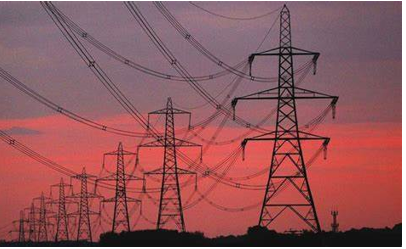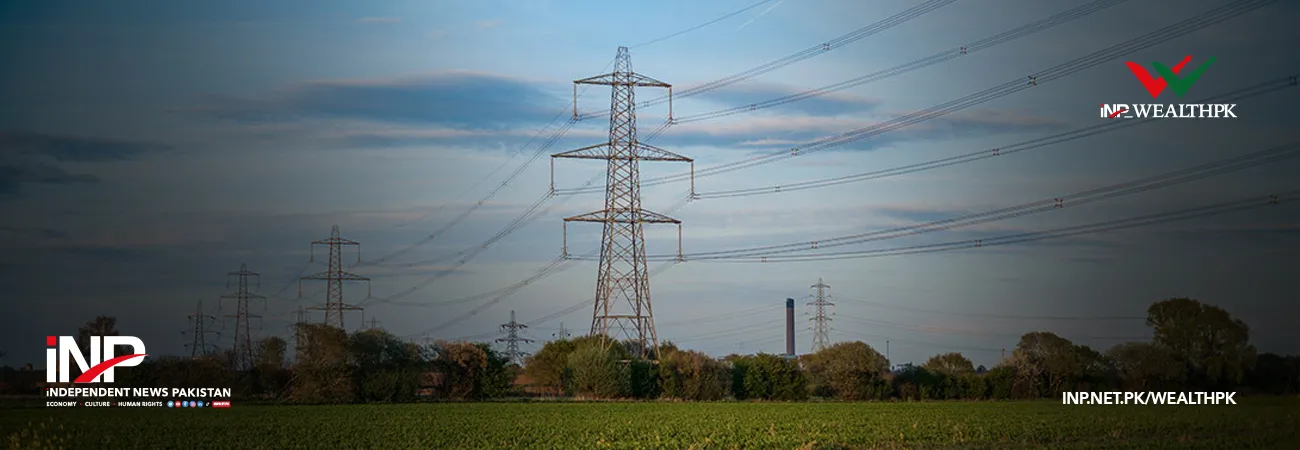INP-WealthPk
Amir Saeed
Shifting industrial loads to the national grid enhances industrial competitiveness, drives economic recovery, and promotes a cleaner energy future, Ubaid Ullah Khan, Programme Associate (Power Markets) at Renewables First, told WealthPK.

“Shifting industrial loads to the national grid represents a pivotal strategy for Pakistan's energy future and economic recovery. This transition not only addresses pressing issues, such as energy costs and operational efficiency, but also aligns with the global sustainability goals. “For export-oriented industries, integrating with the national grid can alleviate energy-related challenges, thereby enhancing their competitiveness in the international markets. Currently, many industries rely on subsidized natural gas for captive power generation, which offers lower electricity costs,’’ he said.
As international frameworks like the Carbon Border Adjustment Mechanism (C-BAM) emerge, reliance on carbon-intensive energy sources is increasingly scrutinized. The products produced using high-carbon energy may incur tariffs, raising costs and diminishing market competitiveness. Therefore, transitioning to the national grid, which boasts a more diverse and cleaner energy mix, becomes essential for the industries aiming to meet sustainability standards and cater to the environmentally conscious consumers. “For the national grid itself, integrating industrial loads is crucial for improving system efficiency and financial viability.
The grid currently faces significant challenges due to the stagnant electricity demand and rising rooftop solar installations that contribute to underutilized capacity,’’ Ubaid Ullah pointed out. “The Indicative Generation Capacity Expansion Plan (IGCEP) forecasts a compound annual growth rate (CAGR) of only 2.8%, with further declines in demand expected as solar adoption increases. Despite this reduced demand, there is a commitment to add approximately 20GW of new capacity, resulting in stranded assets and higher tariffs for consumers.’’ He suggested that by shifting industrial loads to the grid, these issues can be mitigated.
A study by Renewables First and Policy Research Institute for Equitable Development (PRIED) suggests that such integration could double or triple the utilization rates of RLNG-based power plants, distributing fixed costs over a larger customer base and ultimately lowering tariffs. “While the advantages of this shift are clear, it necessitates overcoming significant challenges, particularly regarding infrastructure enhancements. The industries require a dependable power supply, which means substantial investments in transmission and distribution networks are critical to ensure reliability.’’
He suggests that clear policies and incentives must be established to facilitate this transition while maintaining operational stability for industries during the process. Collaboration between industry stakeholders and power utilities is essential to create a roadmap that aligns grid capacity with the industrial growth needs. Talking to WealthPK, Dr Anwar Shah, a development economic researcher at the Quaid-e-Azam University Islamabad, said that the strategy of shifting industrial loads to the national grid represents a mutually beneficial approach that enhances global competitiveness while optimizing grid utilization.
“This shift supports industries in meeting the international sustainability trends while simultaneously justifying planned capacity expansions within the grid. By doing so, it contributes to reducing electricity tariffs for the consumers, thereby fostering a more attractive business environment.’’ He pointed out that this transition aligns with Pakistan's broader energy policy goals aimed at increasing the renewable energy contributions to 60% by 2030.
The government’s commitment to reducing greenhouse gas emissions by 50% within the same timeframe underscores the urgency of integrating cleaner energy sources into the industrial sector. “By transitioning industrial loads to the national grid, Pakistan can leverage its renewable resources more effectively while also addressing its economic vulnerabilities linked to fossil fuel dependency.’’ He explained that the shift is not merely an operational adjustment but a strategic imperative for Pakistan’s economic recovery and sustainable development.
This initiative promises to enhance industrial competitiveness on a global scale while ensuring that the national grid operates efficiently and sustainably. Concluding, he said, “By investing in the necessary infrastructure upgrades and fostering collaboration among stakeholders, Pakistan can position itself as a leader in sustainable industrial practices while simultaneously addressing its pressing energy challenges.’’
Credit: INP-WealthPk









